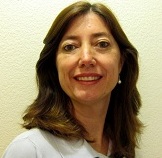Claudia Kajiyama, Research Scientist in the R&D group at Crystal Technology, Inc.
BayBrazil: What is your role at Crystal Technology, Inc?
Claudia Kajiyama: I am responsible for crystal growth of Magnesium doped Lithium Niobate and for process development of stoichiometric Lithium Tantalate through Vapor Transport Equilibration, another material used for light frequency conversion. CTI is a group company of TDK-EPC Corporation (EPCOS was bought by TDK, nearly 2 years ago and the formed company was named TDK-EPC) and the world leader supplier of lithium niobate, a ferroelectric and nonlinear optical material with important properties used in different applications such as SAW (surface acoustic wave) filters, high speed optical modulators for telecommunications, and light frequency conversion.
BayBrazil: How does Crystal Technology participate in the pico-projectors market?
Claudia Kajiyama: Once the crystals are grown, wafers are manufactured from the crystal ingots. The ferroelectric domains of lithium niobate can be appropriately engineered to generate a particular wavelength of interest through frequency doubling; for pico-projectors the color of interest is green. CTI has developed a process of periodic poling wafers of Magnesium doped Lithium Niobate (PPMgOLN) which results in chips that can be further processed to generate green light. CTI supply the periodic poled chips to customers who can integrate the chip and fabricate a laser module.
BayBrazil: Which gadgets use pico-projection technology?
Claudia Kajiyama: There are different technologies that compose the market for pico-projection. There are mainly pico-projectors that are LED based and pico-projectors that are laser based and utilize PPMgOLN. Some advantages of the laser based technology consist in higher color gamut, higher brightness and lower power consumption. This is a market that is in its infancy, with forecast of considerable growth in the next 5 years. The market for pico-projectors is broad and one can imagine a pico-projector being embedded in different gadgets. However, so far the majority of pico-projector models sold are stand alone. Signs of integration are starting to show with, for instance, Samsung introducing recently one model of the Android cell phone that has an embedded pico-projector. Also, Nikon has a digital camera in the market that has a pico-projector embedded. The forecast is that the smart phones will have pico-projectors embedded in them, and that the cell phones market will be a good share of the overall pico-projector market.
BayBrazil: What are the trends in the cell phone industry generated by pico-projection?
Claudia Kajiyama: The trends seen in the cell phone industry are advanced features and connectivity. More and more consumers areaccessing the Internet via some type of wireless access worldwide. We can envision teenagers in a near future uploading and downloading pictures and movies, and being able to project them to others see on a wall or even on a friend’s back using the Pico-projector embedded in the phone.
BayBrazil: Are there companies in Brazil or other emerging markets collaborating in the development of this technology?
Claudia Kajiyama: There are a few suppliers of MgO PPLN around the world, but to the best of my knowledge, no company in Brazil has announced selling or developing this type of product.
BayBrazil: The proportion of women in your field is very low. What are the challenges to be minority in the workplace?
Claudia Kajiyama: The environment at CTI is pleasant, and people easy to work with, I am very fortunate in this respect and I don’t particularly feel many challenges as a woman. There were a couple of occasions, while providing technical support to customers abroad, when I felt the need of being very assertive to overcome the challenge of being a woman scientist. Maybe, another challenging situation was to be able to balance motherhood with being a scientist, once our son was born. It wasn’t easy to find breaks to pump milk for the baby and bring to work everyday a bag with pump, bottles, etc. Not easy, but still doable.
BayBrazil: What can educators and parents do to encourage girls to pursue careers on engineering and sciences?
Claudia Kajiyama: Children are very curious individuals and fearless of questioning; it applies to both boys and girls. Stimulating curiosity and the questioning on how things work can awake the interest for science. As for educators, if they recognize that instruction is inquiry-based and hands-on, and that students engage in problem solving as cooperative teams, it may result that both boys and girls are motivated to pursue activities in science, engineering, technology.
BayBrazil: How was your transition from Brazil to Silicon Valley?
Claudia Kajiyama: The transition was quite smooth, I would say. I came to the Bay Area in 1998 to do my post-doc at Stanford University. Initially, I received a grant from FAPESP to develop a project in “one year post-doc”, but the research evolved well and I got an extension to do a second year. A few months in the second year, I started consulting for CTI and it was a fruitful consultancy for both sides. A little over 1.5 years of consulting job passed, when I joined the regular staff in 2001. In the first year of my stay I met through the Brazilian Student Association at Stanford, Bruno Kajiyama, a Brazilian who was living abroad for many years already. Things in my life seem to happen concomitantly and needless to say that we got married, approximately in the same time period that I became a regular employee at CTI.
BayBrazil: What does your Brazilian background represent in your workplace?
Claudia Kajiyama: The Brazilians are cheerful, creative and friendly; these characteristics have helped in the workplace, especially when interacting with other departments and getting things done without much hassle. When some improvise was necessary in experimental set-ups the Brazilian creativity came in handy.
BayBrazil: How has the multicultural Silicon Valley impacted your life?
Claudia Kajiyama: It impacted in a very positive way. I have several good friends of different nationalities and I interact with people, who were born in distant countries from Brazil, and that I never imagined I would meet before I came here. It is so enriching, being able to learn stories and experiences of life from people born on the other side of the globe. I learned that despite of different cultures and ways of react to situations, we are all the same in essence.








